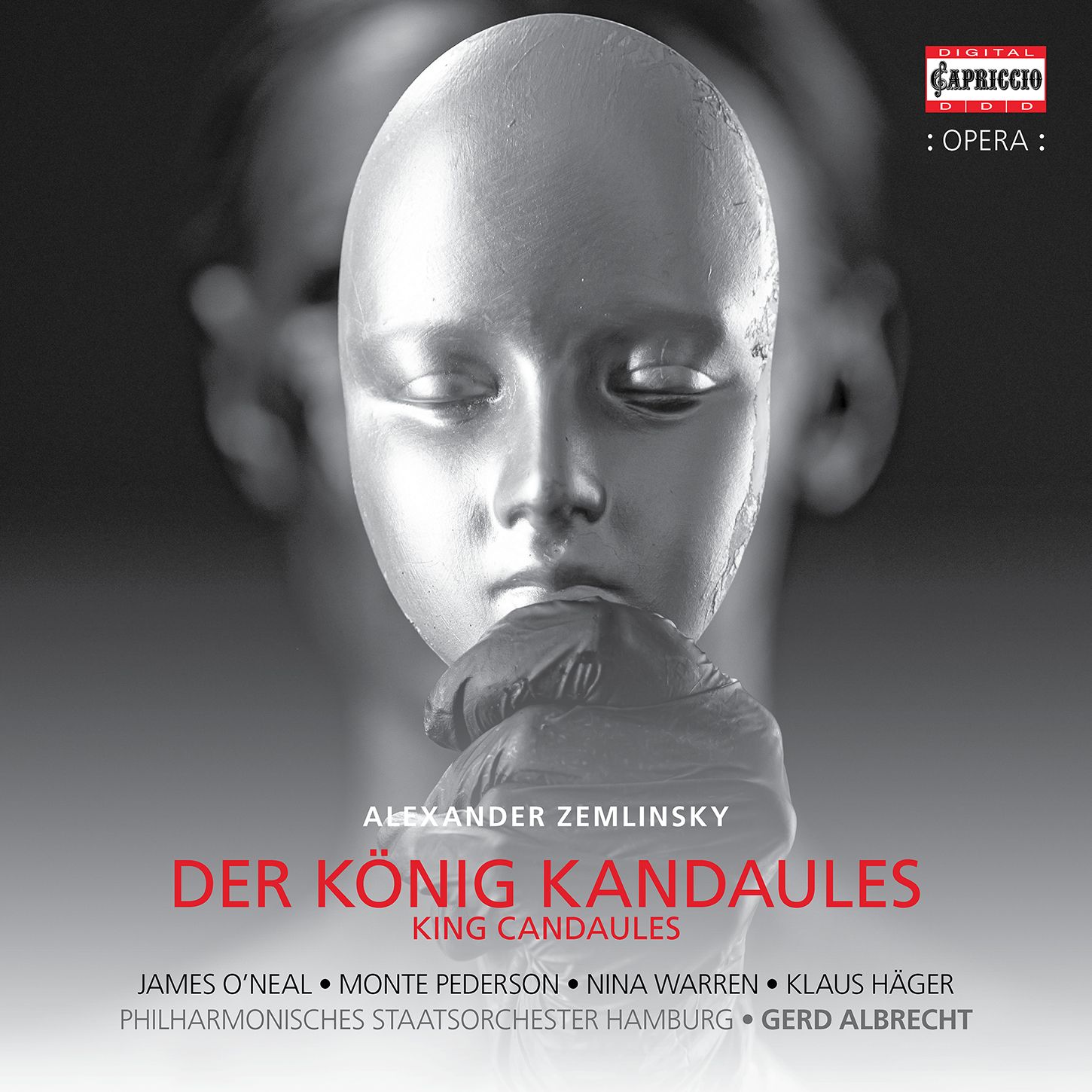Zemlinsky's Der König Kandaules
A veritable feast of Zemlinsky!

We continue our series of Zemlinsky operas, as Capriccio continues its sequence of remasterings to celebrate the 150th anniversary of the composer's birth.
This opera has an interesting gestation - and completion! Zemlinsky fled Austria in 1938 when German troops occupied the country, arriving in New York via Prague (he had already moved to Vienna from Berlin because of the Nazis). The composer hoped to stage the opera at the Met (he had an mportant connection there in tge form of Artur Bodanzky, one of his pupils - a conductor famous for his Wagner Ring performances) but they rejected it because of the bed scene in the second act. Bodanzky's appraisal of the libretto also had ramifications resulting in Zemlinsky's abandonment of the score
The musical language here is close to Eine florentinische Ttagödie (A Florentine Tragedy) or Der Zwerg (The Dwarf). Previously, we covered Es war einmal on Classical Explorer - a fairy tale opera and the perfect jumping-off point for Zemlinsky's operatic output. Here, perhaps, is the ideal continuation. In this opera, Zemlinsky's harmonies tend to strain the limites of tonality, giving him the full range at his disposal. It is to the three main characters (Candaules, Gyges and Nyssia) that Zemlinsky gives the pure lyricism, using that to distinguish them from the secondary characters.
The libretto for the opera is by the composer after the drama Le Roi Candaule by André Gide (in a German adaptation by Fritz Blei). The Zemlinsky scholar Anthony Beaumont reconstructed and orchestrated the score for a production at the Hamburg State Opera. The story is, frankly, lewd: it begins with the promise of the "unveiling" of Candaules' wife, Nyssia. Once her extreme beauty is revealed, a bad omen occurs: someone at the feat bites into a fish and finds a ring that brings back luck (a darker version of Des Knaben Wonderhorn's "Rheinlegendchen," perhaps). Almost immediately, Gyges' hut is alight (via, it transpires, an alcohol-induced accident), setting off a chain of events including murder. The ring itself carries the power of invisibility (a ring/Tarnhelm hybrid?!) which helps Gyges spend a night with the King's wife. Their "acts of love" are symbolised in the Prelude to the third and final act:
... but just listen to the fervent writing, both vocal and orchestral, that leads up to this (the end of act II). The three main characters are here: O'Neal as Kandaules, Monte Pedersen as Gyges and Nina Warren as Nyssia. This is a near quarter hour segment - the music at times sounds very much like Berg in its Expressionist intensity:
James O'Neal takes on the Heldentenor role of King Candaules. This sequence from act one features him prominently:
... while, as Gyges, Monte Pedersen shines in the Expressionist lines of his "Mein Ring! Mein Ring" (Alberich via Albrecht, anyone?) from the final act:
And as Nyssia, Nina Warren comes into her own in the final stages of the opera. It's quite a big ask to respond, vocally, to Nyssia's long passage at the beginning here, and O'Neal has the strength:
As a reissue, the booklet is fairly basic (short essay, synopsis - no text or translations). But on the plus side it's a slim twofer and comes in a nice, shiny cardboard slipcase.
Antony Beaumont has done a real service to music in preparing this score. Zemlinsky's music is powerful and - importantly - consistently fine. There are no obvious weak points here, and so Albrecht can keep the baseline tension high, ratcheting it up for the climaxes. He conducts the end of the opera supremely well (another quarter-hour except follows below):
Albrecht provides a real sense of discovery. The set is taken from live performances at the Hamburg State Opera in October 1996, recorded by North German Radio.
To supplement the Albrecht performance via the power of the Web, here are videos of the 2002 production from Salzburg:
Performance details for this Salzburg production from the Kleines Festspielhaus - which also appeared on a now out-of-print Andante set - are below:
Robert Brubaker (tenor) – König Kandaules; Wolfgang Schöne (baritone) – Gyges; Mel Ulrich (baritone) – Phedros; John Nuzzo (tenor) – Syphax; Jochen Schmeckenbecher (bass)– Nicomedes; Randall Jakobsch (bass) – Pharnaces; Georg Zeppenfeld (bass)– Philebos; Jürgen Sacher (tenor) – Simias; John Dickie (tenor) – Sebas; Almas Svilpa (bass-baritone)– Archelaos; Peter Loehle (bass) – Der Kock; Nina Stemme (soprano)– Nyssia. Deutsches Symphonie Orchester Berlin, Mozarteum Orchester Salzburg (Bühnenmusik)/Kent Nagano
A veritable feast of Zemlinsky!
